Important Information

Subscription
Get started with Reps to Beat today and enjoy the Basic Version free for three months. After the trial period, your subscription will automatically renew at $6.99 per month, unless you cancel before the next renewal.
Upgrade to the Pro Version for advanced features. The Pro Version is available for $9.99 per month and does not come with a free trial. Your subscription will automatically renew every month, but you can cancel any time before the next renewal to avoid being charged.
With both versions, you’ll have access to our extensive library of exercises, workouts, and routines, as well as the option to create and save your own custom workouts. Join today and start achieving your fitness goals!
Using Proper Form:
Proper form is crucial when performing resistance training exercises to maximize benefits and minimize the risk of injury. Here are some of the benefits of using proper form during exercise:
- Targeted Muscle Activation: Using proper form during exercise can help ensure that the targeted muscles are being effectively activated. This can lead to greater muscle gains and improved strength.
- Improved Joint Stability: Proper form also helps maintain proper joint alignment and stability during exercises, which can reduce the risk of injury and pain.
- Better Overall Performance: Using proper form during exercises can also help improve overall performance, including better balance, control, and range of motion.
- Prevent Overuse Injuries: Using proper form can also help prevent overuse injuries by ensuring that different muscle groups are being used effectively, reducing the risk of repetitive stress injuries.
In contrast, using improper form can lead to a variety of risks, including injury, ineffective training, and limited progress. Therefore, it’s essential to learn the correct form for each exercise and to use it consistently to reap the benefits of resistance training.
Overall, working with a personal trainer to ensure proper form, and Reps to Beat, can be a valuable investment in your fitness journey, helping you to achieve your goals more efficiently and safely than if you were to train on your own.


Baseline Testing
Determining an individual’s baseline strength for each muscle group is a crucial step in developing a safe and effective resistance training program. This process helps to promote muscle strength and growth, address any imbalances, and prevent injuries.
By measuring an individual’s baseline strength, we can determine the appropriate weight and reps for each muscle group. This information allows Reps to Beat to tailor a training program that is challenging yet achievable, setting you up for success.
By testing each muscle group individually, Reps to Beat can identify any imbalances that may exist. This information is vital in developing a training program that addresses any weaknesses and promotes overall muscle balance.
Tracking progress over time is a key motivator and provides feedback on the effectiveness of the training program. By measuring baseline strength and regularly retesting, individuals can see improvements and Reps to Beat can adjust programs accordingly.
Knowing your baseline strength also ensures that you are starting with an appropriate weight, reducing the risk of injury. Gradually increasing weight and intensity helps to prevent overloading muscles too quickly, promoting long-term strength and growth.
In summary, Reps to Beat is unique in providing baseline testing, which is an essential step in developing a safe and effective resistance training program that promotes muscle strength and growth, addresses imbalances, and avoids injury.
Workout Time Availability
When inputting your workout time availability into the app, please consider the duration of your exercise sets only. Your workout time should begin at the start of your first exercise set and end at the completion of your last exercise set. Any additional time spent at the gym before or after your workout should not be included in this calculation.
By accurately inputting your workout time availability, the app can provide you with tailored workout plans that best fit your schedule and help you maximize your gym time efficiently.


Recommended Number of Sets:
The recommended number of sets for each type of training objective are:
Strength: The primary goal of strength training is to increase maximal strength. The recommended number of sets for strength training is generally 3-6 sets, with heavier weights and longer rest periods between sets.
The recommended number of repetitions per set is typically in the range of 1-6, with the goal of lifting as heavy as possible for the given number of repetitions.
Power: The primary goal of power training is to increase the rate at which force can be produced. The recommended number of sets for power training is generally 3-6 sets, with lighter weights lifted explosively and longer rest periods between sets. The recommended number of repetitions per set is typically in the range of 1-5, with the focus on lifting the weight as explosively as possible.
Hypertrophy: The primary goal of hypertrophy training is to increase muscle size. The recommended number of sets for hypertrophy training is generally 3-6 sets, with moderate weights and shorter rest periods between sets. The recommended number of repetitions per set is typically in the range of 8-12, with the goal of lifting weights that are heavy enough to cause fatigue within this repetition range.
Endurance: The primary goal of endurance training is to improve the ability of the muscles to perform work over a prolonged period. The recommended number of sets for endurance training is generally 2-4 sets, with lighter weights and shorter rest periods between sets. The recommended number of repetitions per set is typically in the range of 12-20, with the goal of lifting weights that are light enough to be sustained for the given number of repetitions.
It is important to note that these set ranges and recommended reps per set are not set in stone and may vary depending on an individual’s goals, experience level, and specific training program.
Target Reps per Set
The recommended rep ranges for each type of training objective are as follows:
- Strength: The primary goal of strength training is to increase maximal strength. The recommended rep range for strength training is generally 1-6 reps, with heavier weights and longer rest periods between sets.
- Power: The primary goal of power training is to increase the rate at which force can be produced. The recommended rep range for power training is generally 1-5 reps, with lighter weights lifted explosively and longer rest periods between sets.
- Hypertrophy: The primary goal of hypertrophy training is to increase muscle size. The recommended rep range for hypertrophy training is generally 8-12 reps, with moderate weights and shorter rest periods between sets.
- Endurance: The primary goal of endurance training is to improve the ability of the muscles to perform work over a prolonged period. The recommended rep range for endurance training is generally 12-20 reps, with lighter weights and shorter rest periods between sets.
It is important to note that these rep ranges are not definitive and may vary depending on an individual’s goals, experience level, and specific training program. It’s also essential to maintain proper form and technique throughout the exercise. Reps to Beat will safely and gradually increase the weight or reps over time to prevent injury and achieve optimal results.

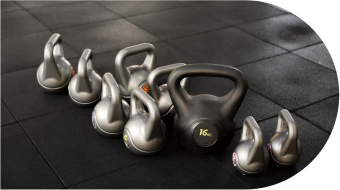
Target Rep ranges for different training objectives
Using Reps to Beat to track workouts can help ensure that you are using the proper weight and rep range to maximize your muscle development. By tracking your progress and gradually increasing the weight and reps over time, Reps to Beat will insure you continue to challenge
your muscles and see improvements in strength, power, hypertrophy, or endurance, depending on your specific training objectives. This will help prevent plateaus and ensure that you continue to see progress towards your fitness goals.
Here are the generally recommended target ranges:
Strength: 1-6 reps with heavy weight. This type of training focuses on developing maximum strength and is usually performed by powerlifters and athletes.Reps to Beat Baseline Testing, and subsequent workout tracking will insure you will be using the proper weight to maximize you muscle development.
Power: 1-5 reps per set, with heavy weight and a focus on performing the movements with maximal force and speed. This type of training focuses on improving the ability to generate force quickly and explosively, which can translate into improved athletic performance in sports such as sprinting, jumping, and throwing.
Hypertrophy: 6-12 reps with moderate weight. This type of training focuses on increasing muscle size and is usually performed by bodybuilders and those looking to improve their physique.
Endurance: 12-20+ reps with light weight. This type of training focuses on improving muscular endurance and is usually performed by athletes and individuals participating in endurance sports.
It’s important to note that these rep ranges are not set in stone and can be adjusted depending on individual goals and needs. Additionally, it’s important to use proper form and technique regardless of the rep range used. The rest periods between sets also play a crucial role in achieving the desired training objective. Longer rest periods are recommended for strength and power training, whereas shorter rest periods are recommended for hypertrophy and endurance training. Reps to Beat will insure you are using the appropriate weight, rep ranges and rest periods for your specific objectives.
Training Periodicity
Training periodicity, or the recommended frequency of resistance training per week, is an essential consideration for achieving optimal results while avoiding injury. The frequency varies depending on an individual’s training experience level and training objectives. Here are some general guidelines to consider:
Novices (less than 3 months of consistent training experience):
- Strength: 2-3 times per week with at least 48 hours of rest between sessions
- Hypertrophy: 2-3 times per week with at least 48 hours of rest between sessions
- Power: 2-3 times per week with at least 48 hours of rest between sessions
- Endurance: 2-3 times per week with at least 48 hours of rest between sessions
Beginners (3-6 months of consistent training experience):
- Strength: 2-3 times per week with at least 48 hours of rest between sessions
- Hypertrophy: 3-4 times per week with at least 24-48 hours of rest between sessions
- Power: 2-3 times per week with at least 48 hours of rest between sessions
- Endurance: 3-4 times per week with at least 24-48 hours of rest between sessions
Intermediate (6 months to 2 years of consistent training experience):
- Strength: 3-4 times per week with at least 24-48 hours of rest between session
- Hypertrophy: 4-5 times per week with at least 24 hours of rest between session
- Power: 3-4 times per week with at least 24-48 hours of rest between sessions
- Endurance: 4-5 times per week with at least 24 hours of rest between sessions
Advanced (2+ years of consistent training experience):
- Strength: 4-6 times per week with at least 24-48 hours of rest between sessions
- Hypertrophy: 5-7 times per week with at least 24 hours of rest between sessions
- Power: 4-6 times per week with at least 24-48 hours of rest between sessions
- Endurance: 5-7 times per week with at least 24 hours of rest between sessions
Rest periods between sets can also vary depending on the training objective and the individual’s training experience level. Reps to Beat’s Timer makes sure you are resting the proper amount between sets for your specific training objective.
It’s essential to remember that these guidelines are general, and every individual may have unique needs and considerations. Consulting with a qualified fitness professional can help develop a personalized training plan with Reps to Beat to achieve your specific goals, safely and effectively.
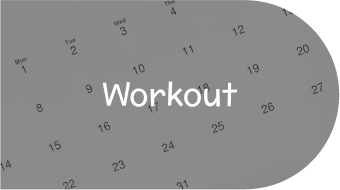
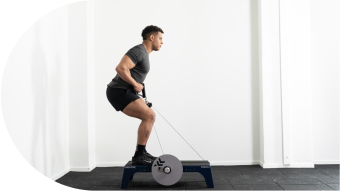
Concentric and Eccentric speeds
The speed of the concentric and eccentric phases during resistance training exercises should align with your specific training objective. It is important to use the appropriate speed for each phase to achieve the desired training effect.
With the Reps to Beat Timer, you can ensure that your speed aligns with the science-proven most effective speed for muscle development, based on your specific training objective.
General guidelines are the following:
- Strength: The goal of strength training is to lift heavy weight with controlled form. For the concentric phase, it’s recommended to lift the weight slowly and in a controlled manner. For the eccentric phase, it’s recommended to lower the weight even slower.
- Hypertrophy: Hypertrophy training aims to stimulate muscle growth. For the concentric phase, a moderate speed is recommended to lift the weight. For the eccentric phase, the weight should be lowered slightly slower.
- Power: Power training is about moving weight as explosively as possible to build speed and explosiveness. For the concentric phase, it’s recommended to lift the weight explosively and quickly. For the eccentric phase, the weight should be lowered in a controlled but faster manner than the concentric phase.
- Endurance: Endurance training is focused on sustaining exercise over a longer period. For both the concentric and eccentric phases, it’s recommended to move at a slower speed for each phase to maintain endurance and prevent fatigue.
It’s important to keep in mind that these recommended speeds can vary based on individual goals, experience, and other factors. The Reps to Beat Timer will properly pace your movements to maximize you training development.
Free Weights or Machines:
Resistance training is a versatile form of exercise that can be performed using different equipment, such as free weights (ex: dumbbells and barbells) and machines (ex: cable machines and weight stack machines).
Each type of equipment has its own unique benefits and drawbacks, which individuals should consider when deciding which type of equipment to use in their training program.
Benefits of Free Weights:
- Functional Training: Free weights enable more functional movements that can better simulate real-life activities, which can improve overall fitness.
- Increased Stabilization: Free weight exercises require greater stabilization, which can improve balance, coordination, and engage more muscle groups.
- Variety of Exercises: Free weights offer a greater variety of exercises that can be performed, which provides greater flexibility in designing a training program.
Drawbacks of Free Weights:
- Greater Risk of Injury: Free weights require greater skill and control, which increases the risk of injury if proper form is not maintained.
- Requires More Skill: Free weight exercises require more skill and technique, which may be challenging for beginners and require a longer learning curve.
Benefits of Machines:
- Ease of Use: Machines are typically easier to use and require less skill and coordination than free weights, which can be beneficial for beginners or individuals with physical limitations.
- Increased Isolation: Machines can isolate specific muscle groups, which can be beneficial for targeted muscle development and rehabilitation.
- Reduced Risk of Injury: Machines often come with safety features, such as weight stacks and guide rails, that reduce the risk of injury.
Drawbacks of Machines:
- Limited Range of Motion: Machines often have a fixed range of motion, which may not allow for a full range of motion, and limit functional training.
- Limited Exercise Variety: Machines are designed for specific exercises and may not offer the same variety as free weights, which can limit the variety of training programs.
- Limited Progression: Machines often have limited weight increments, which can make it difficult to progress over time.
Ultimately, the choice between free weights and machines depends on the individual’s goals, experience, and preferences. A combination of both free weights and machines can be used in a training program to maximize the benefits of each and reduce the drawbacks.

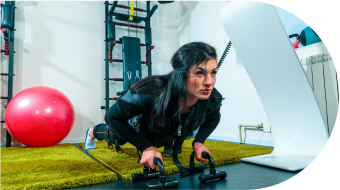
Training for Specific Sports
The following list includes five sports activities commonly associated with each of the training objectives:
Strength:
- Powerlifting
- Olympic weightlifting
- Strongman competitions
- Football (offensive and defensive linemen)
- Wrestling
Power:
- Olympic weightlifting
- Sprinting
- Jumping
- Boxing
- Martial arts
Hypertrophy:
- Bodybuilding
- Figure and fitness modeling
- Powerlifting (off-season training)
- Football (off-season training)
- Rugby (off-season training)
Endurance:
- Running (marathon, half-marathon, etc.)
- Cycling (road, mountain, etc.)
- Swimming
- Triathlon (including running, cycling, and swimming)
- Cross-country skiing
It’s important to note that these sports activities may overlap and not be exclusive to one training objective. Moreover, an individual’s chosen sports activity may not necessarily align with their specific training objective, as other factors such as skill, strategy, and technique also play an important role in sports performance.
Personal Trainers
A personal trainer using Reps to Beat can design a customized workout plan that considers your individual fitness level, goals, and any limitations or injuries you may have. They can also provide motivation and accountability to help you stay on track and reach your goals.
Moreover, a personal trainer can adjust your workout plan over time as you progress and your fitness needs change.
Overall, working with a personal trainer and Reps to Beat can be a valuable investment in your fitness journey, helping you to achieve your goals more efficiently and safely than if you were to train on your own.
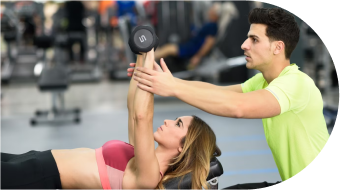

Medical Checkups
Before beginning a resistance training program, it is highly recommended that you undergo a thorough medical examination to identify any pre-existing medical conditions or injuries that may be exacerbated by the physical stress of resistance training.
This is important to ensure that you can safely engage in this type of exercise and to prevent potential harm to your body.
A medical checkup can identify conditions such as high blood pressure, heart disease, arthritis, or other musculoskeletal injuries that may affect your ability to perform resistance training safely and effectively. Regular check-ups with a healthcare provider can also help you monitor your overall health and identify any potential issues as you increase the intensity and volume of your workouts.
Overall, while resistance training is generally safe and beneficial for most individuals, it is crucial to consult with a qualified healthcare professional before starting a new exercise program and to continue to monitor your health throughout your training. By taking these precautions, you can ensure that you are engaging in resistance training in a safe and effective manner that promotes overall health and wellbeing.
Training to Failure
There are three main definitions or categories of Training to Failure:
- Cadence failure: This type of failure occurs when an individual is no longer able to perform repetitions at the prescribed cadence. While this does not affect the effectiveness of the exercise, it does not necessarily increase the risk of injury.
- Form failure: This type of failure is riskier than cadence failure, as it means that an individual is no longer able to maintain proper form while performing repetitions. This can lead to compensatory movements or poor form, increasing the risk of injury.
- Total failure: This type of failure is the riskiest of the three, as it means that an individual is no longer able to perform any more repetitions, even with maximal effort. This can increase the risk of injury and may lead to overtraining or other negative effects if used excessively.
Reps to Beat training programs are designed around training to reach Cadence failure. This approach allows individuals to safely and effectively challenge their muscles without increasing the risk of injury. In contrast, both Form and Total Failure unnecessarily increase the risk of injury and are not recommended for use with the Reps to Beat app.
Our app provides customized workouts that gradually increase in intensity, helping you build strength and endurance while minimizing the risk of injury. By using Reps to Beat, you can reach your fitness goals safely and effectively.


Progressive Overload
Progressive overload is a crucial principle in resistance training that involves systematically and gradually increasing the demands placed on the body. This can be achieved by increasing the intensity, frequency, and duration of workouts over time.
By doing so, the body is continually challenged, which promotes muscle growth and strength gains.
The Reps to Beat programming is designed to create a consistent stimulus that forces the body to adapt and become more resilient. As the body adapts to the stress placed upon it, it becomes stronger and better able to handle the demands of exercise. Reps to Beat will progressively and automatically increase your target reps and weight as your individual muscle development permits. This leads to a controlled increase in muscle size, strength, and overall fitness.
It’s important to note that progressive overload should be implemented gradually and progressively, as sudden, or excessive increases in intensity or volume can lead to injury or burnout. Proper programming, tracking, and monitoring of progress with Reps to Beat is key to effectively implementing the principle of progressive overload in your training.
Training Volume
Training volume is an essential factor to consider in resistance training, as it determines the total amount of work done during a workout or training cycle. Typically, it is calculated by multiplying the number of sets, reps, and weight lifted for each exercise.
The level of training volume affects the amount of muscle growth and strength gains. Generally, gradually increasing the training volume over time can lead to greater gains in muscle mass and strength. However, it’s important to avoid increasing volume too quickly or without adequate recovery time, as this can increase the risk of injury and lead to overtraining.
The appropriate increase in training volume for muscle development without a high risk of injury may vary based on several factors, such as the individual’s fitness level, training experience, and goals. Reps to Beat was designed to help you manage this progression in a safe and effective manner.
Incorporating recovery periods into your training program is crucial to allow for adequate rest and muscle recovery. This may involve taking a day or two off between workouts or incorporating active recovery activities such as stretching or low-intensity cardio. By properly managing training volume and recovery, you can achieve maximum results while minimizing the risk of injury.


Overtraining
Overtraining occurs when an individual engages in excessive and prolonged training, which can manifest in different ways such as training too frequently, with too much volume, or at too high of an intensity, without giving the body adequate time to rest and recover. Overtraining can lead to a range of negative consequences that include:
- Decreased performance: Overtraining can lead to decreased performance, as the body is unable to adapt to the stress of exercise.
- Increased risk of injury: Overtraining can increase the risk of injury, as the body is unable to recover adequately and is more susceptible to injury.
- Decreased immune function: Overtraining can weaken the immune system, making the individual more susceptible to illness and infection.
- Mental and emotional fatigue: Overtraining can lead to mental and emotional fatigue, including feelings of depression, anxiety, and irritability.
- Insomnia: Overtraining can disrupt sleep patterns, leading to insomnia and other sleep-related issues.
While there are benefits to the body to train hard and challenge its limits, it is important to avoid overtraining to prevent negative consequences such as decreased performance, increased risk of injury, and decreased immune function.
Importance of Concentric and Eccentric movements
The proper speed of concentric and eccentric movements during exercises is important for achieving specific training objectives, such as developing strength, power, hypertrophy, or endurance. The concentric phase is the lifting
The following are some key considerations for executing exercises with the proper speed of concentric and eccentric movements based on training objectives: Developing Strength: To develop strength, it’s important to focus on lifting heavy weights with proper form and control during both the concentric and eccentric phases. The speed of the movements should be slow and controlled, with a focus on maximal force production during the concentric phase and maximal muscle activation during the eccentric phase. Developing Power: Power exercises require explosive movements, with a focus on maximal force production during the concentric phase. The eccentric phase is typically faster than the concentric phase, as it’s used to prepare for the explosive concentric phase. The goal is to produce maximal force as quickly as possible. Developing Hypertrophy: To develop muscle hypertrophy, the speed of both the concentric and eccentric phases should be moderate, with a focus on using enough weight to create muscular fatigue. This means lifting at a controlled pace during the concentric phase, and lowering the weight slowly during the eccentric phase to maximize time under tension. Developing Endurance: Endurance exercises require a higher number of repetitions at a lower intensity. The speed of the concentric and eccentric phases should be faster than other training objectives, with a focus on maintaining proper form and technique while performing a higher number of repetitions. Overall, the proper speed of concentric and eccentric movements during exercises is critical for achieving specific training objectives. By adjusting the speed of the movements based on training objectives, individuals can maximize their gains in strength, power, hypertrophy, or endurance.


Time available for workouts:
- Reduced Effectiveness: Not using proper form can reduce the effectiveness of exercises, as improper form may cause muscles to work less effectively or not at all.
Uneven Muscle Development: Poor technique can also lead to uneven muscle development, as some muscles may be worked harder than others due to compensation for poor form.
- Overcompensation by other Muscles: Not using proper form can cause other muscles to compensate for weaker muscles or muscles that are not being properly activated, which can lead to muscle imbalances and increased risk of injury.
Using proper form during exercise is essential for maximizing the benefits of resistance training while minimizing the risks of injury. By focusing on proper technique and form, individuals can achieve better overall performance, reduce the risk of injury, and improve their overall fitness and health.
